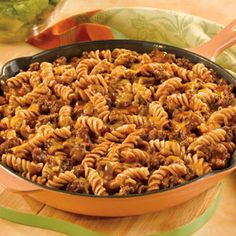Today’s post will be the last side-by-side comparison of a Standard American Diet (S.A.D.) meal and a grain-free, unprocessed meal.
For Part 1, a breakfast comparison, click here. For Part 2, a lunch comparison, click here.
The healthy American dinner consists of:
 1 cup whole wheat pasta (enriched)
1 cup whole wheat pasta (enriched)
1 cup generic tomato sauce
2 ounces low-fat ground turkey
1 cup skim milk (fortified & fortified)
1 brownie (using a recipe recommended by Ellie Kroger, Registered Dietician)
The whole foods meal contains:

8 ounces ground beef (grass-fed)
½ avocado
1 cup asparagus
1 large sweet potato
Both meals provide 650 calories.
First, let’s look at the macronutrients and fatty acid profile:
| . | Total Carbs | Fiber | Net Carbs | Protein | Sat Fat | Mono Fat | Omega 3 | Omega 6 |
| S.A.D. Dinner | 90 | 10 | 80 | 25 | 5 | 5 | 250 | 12500 |
| Whole Foods | 45 | 15 | 30 | 45 | 10 | 17 | 500 | 2000 |
As we saw in the previous comparisons, the S.A.D. meal provides almost 100 grams of carbs with only 10 grams of fiber and very little healthy fat. Even adding sweet potato to the grain-free dinner results in only 30 net carbs, fewer than half the carbs in the Standard American dinner.
The whole foods dinner offers a more adequate amount of healthy fat, particularly saturated and monounsaturated, aiding in absorption of vitamins, providing a stable energy source, and maintaining healthy cells.
Finally, the omega-3 to omega-6 ratio, which should ideally be close to 1-to-2, is 1-to-50 in the Standard American Diet meal. The tomato sauce and “healthy” brownie both contain canola oil, molecularly the same as corn oil, causing inflammation and cardiovascular disease.
Next is the vitamin content of both meals:
| . | Vit A | Vit C | Vit D | Vit E | Vit K | Vit B6 | Vit B12 | Folate |
| S.A.D. Dinner | 4500 | 20 | 0 | 3 | 30 | 0.5 | 1 | 50 |
| Whole Foods | 27000 | 42 | 0 | 7 | 83 | 2 | 5 | 180 |
No surprise here! Vegetables, meats, and healthy fats provide far more vitamins than refined grains, diary, and oils.
Finally, the mineral content of each meal:
| . | Calcium | Iron | Magnesium | Potassium | Zinc | Copper | Manganese | Selenium |
| S.A.D. Dinner | 570 | 5 | 150 | 1500 | 4 | 0.5 | 2 | 55 |
| Whole Foods | 130 | 10 | 150 | 2000 | 13 | 1 | 1 | 36 |
If you recall the previous comparisons, you’ll remember that grains and dairy provide more of certain nutrients.
The Standard American Diet provides more Manganese and Selenium, and ties for Magnesium. However, just a handful of nuts would close this gap and set the whole foods meal ahead in all categories.
In conclusion, the dinner based on whole foods provides more for the body, with less detriment, than the S.A.D. dinner.
I will do one more follow up post totaling the days’ worth of macro- and micro-nutrients. In the meantime, feel free to ask any questions about particular values, foods that may address shortcomings, or if you’d like me to analyze your own meal options.
Thanks for reading!
